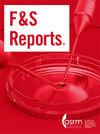一项基于全国登记的队列研究:在体外受精治疗后,对控制卵巢刺激有高反应的年轻女性接受新鲜移植与冷冻策略的怀孕时间
IF 2.2
引用次数: 0
摘要
目的探讨≤37岁对卵巢刺激控制性高反应且初始新鲜移植与全冷冻移植的妊娠时间差异。设计:回顾性队列研究。该研究包括56614名女性,年龄≤37岁,2014年1月至2019年12月首次体外受精(IVF)取卵后取出卵母细胞≥15个,数据录入辅助生殖技术学会临床结果报告系统。初始新鲜自体体外受精和新鲜胚胎移植周期与胚胎冷冻策略的比较主要结果测量主要结果是妊娠时间导致活产,定义为胚胎移植后10天开始有控制的卵巢刺激。次要终点包括临床妊娠率(CPR)、流产率、每个胚胎移植的活产率(LBR)、卵巢过度刺激综合征的发生率、单胎出生体重和早产率。采用比例风险回归分析对结果进行评估,并根据体重指数、方案类型、授精方法、卵巢刺激天数、初始周期内移植的胚胎数量和检索周期的报告年份进行调整。此外,根据检索到的卵母细胞数量进行亚组分析(队列a: 15-19,队列B: 20-24,队列C: 25-29,队列D: 30-34,队列E: 35-39,队列F:≥40)。结果共纳入56614例患者。共有35,058名女性(平均[SD]年龄31[3.28],平均[SD]体重指数26.4[6.23])接受了新鲜胚胎移植,21,556名女性(平均[SD]年龄31[3.32],平均[SD]体重指数26.3[6.19])接受了冷冻策略。采用新鲜胚胎移植的妇女的平均妊娠时间(SD)为12.6周(20.6周),采用全冷冻策略的妇女为20.8周(21.9周)。在对多个治疗变量进行调整后,采用新鲜胚胎移植的患者的妊娠时间明显短于采用冷冻策略的患者(调整后的风险比为1.66[95%可信区间{CI}, 1.62-1.69],调整后的平均差异为- 8.1 [95% CI, - 8.64至- 7.55]周)。在调整后的亚组分析中,各组之间妊娠时间的显著缩短被统计学意义上的LBR和CPR在初始转移周期的显著减少所抵消,而不是累积结果。队列A组间LBR的校正相对危险度,95% CI为0.94(0.92-0.97),队列F组为0.79(0.72-0.87)。队列A组间心肺复苏术校正相对危险度,95% CI为0.91(0.89-0.94),队列F组为0.80(0.74-0.87)。结论:对于年龄≤37岁,体外受精后取出卵母细胞≥15个的女性,新鲜胚胎移植与实现妊娠的时间缩短相关,与冷冻策略相比,差异有统计学意义,差异为6-8周。在接受新鲜胚胎移植的妇女中,卵巢过度刺激综合征的发生率为2%。尽管新鲜胚胎移植是安全有效的,但随着卵母细胞数量的增加,lbr的显著下降损害了缩短妊娠时间的好处。本文章由计算机程序翻译,如有差异,请以英文原文为准。
Time to pregnancy in young women with high response to controlled ovarian stimulation undergoing fresh transfer vs. a freeze-all strategy after in vitro fertilization treatment—a nationwide register-based cohort study
Objective
To investigate the time to pregnancy in women ≤37 years of age with high response to controlled ovarian stimulation and undergoing an initial fresh transfer vs. those women proceeding with a freeze-all strategy.
Design
A retrospective cohort study.
Subjects
The study included 56,614 women, aged ≤37 years and those with ≥15 oocytes retrieved after their first oocyte retrieval for in vitro fertilization (IVF) between January 2014 and December 2019, with data entered in the Society of Assisted Reproductive Technology Clinical Outcomes Reporting System.
Exposure
Initial fresh autologous IVF and fresh embryo transfer cycles compared with a freeze-all strategy of embryos
Main Outcome Measures
The primary outcome was time to pregnancy resulting in live birth, defined as the start of controlled ovarian stimulation through 10 days after embryo transfer. Secondary end points included clinical pregnancy rate (CPR), miscarriage rate, live birth rate (LBR) per embryo transfer, rates of ovarian hyperstimulation syndrome, singleton birthweights, and preterm birth rate. The outcomes were assessed with proportional hazard regression analysis and adjusted for body mass index, protocol type, insemination method, days of ovarian stimulation, number of embryos transferred in the initial cycle, and reporting year of retrieval cycle. Further, a subgroup analysis was performed based on the number of oocytes retrieved (cohort A: 15–19, cohort B: 20–24, cohort C: 25–29, cohort D: 30–34, cohort E: 35–39, and cohort F: ≥40).
Results
A total of 56,614 patients were included in the analysis. A total of 35,058 women (mean [SD] age, 31 [3.28] and mean [SD] body mass index, 26.4 [6.23]) underwent fresh embryo transfers and 21,556 women (mean [SD] age, 31 [3.32] and mean [SD] body mass index, 26.3 [6.19]) underwent a freeze-all strategy. The time to pregnancy in weeks, mean (SD) in women who had a fresh embryo transfer was 12.6 (20.6) and 20.8 (21.9) in women who used the freeze-all strategy. After adjusting for multiple treatment variables there was a statistically significant shorter time to pregnancy in those who had a fresh embryo transfer than those who used a freeze-all strategy (adjusted hazard ratio, 1.66 [95% confidence interval {CI}, 1.62–1.69], adjusted mean difference, −8.1 [95% CI, −8.64 to −7.55] weeks). In the adjusted subgroup analyses, the significant reduction in time to pregnancy between groups was compromised by a statistically significant reduction in LBR and CPR in the initial transfer cycle, but not the cumulative outcomes. The adjusted relative risk, 95% CI for LBR between groups in cohort A was 0.94 (0.92–0.97) and cohort F was 0.79 (0.72–0.87). The adjusted relative risk, 95% CI for CPR between groups in cohort A was 0.91 (0.89–0.94) and cohort F was 0.80 (0.74–0.87).
Conclusion
In women ≤37 years with ≥15 oocytes retrieved after IVF, a fresh embryo transfer was associated with a statistically significant reduction in time to achieve a pregnancy, a difference of 6–8 weeks compared with a freeze-all strategy. The occurrence of ovarian hyperstimulation syndrome was <2% in women who underwent a fresh embryo transfer. Although a fresh embryo transfer is safe and effective, the benefit of reduction in time to pregnancy was compromised by a significant decline in LBRs with increasing number of oocytes retrieved.
求助全文
通过发布文献求助,成功后即可免费获取论文全文。
去求助

 求助内容:
求助内容: 应助结果提醒方式:
应助结果提醒方式:


